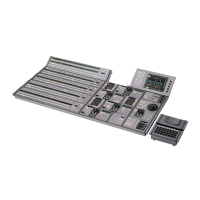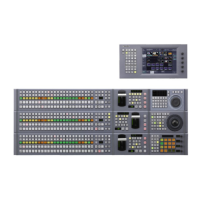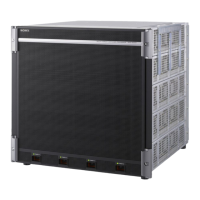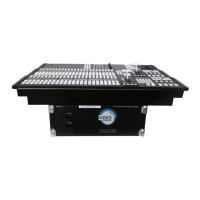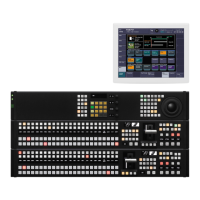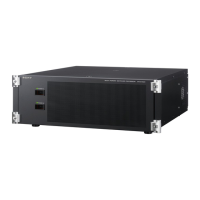Key Adjustments (Key Control Block)
Reference level for
creating mask
signal
–100 (shown as
–00) to +100
–100 (shown as
–00) to +100
–100 (shown as
–00) to +100
–100 (shown as
–00) to +100
–100 (shown as
–00) to +100
When pattern is selected
•
For a normal edge, when [SOFT EDGE] is enabled,
“Key Drop” mode turns on.
•
When a luminance key or linear key is selected as the
key type, and clean mode is enabled, enabling [SOFT
EDGE] ends the clean mode.
Applying the zabton effects
When the [ZABTN] button is lit green, adjust the
following parameters.
Press the [MORE] button lit amber, changing it to green,
then adjust the following parameters.
a)
The pattern is the same as a standard wipe. See “Wipe Pattern List” (page
357).
Using the subsidiary mask
In the key control block, press the [SUB MASK] button,
turning it on. The parameter settings depend on the mask
source selected as [Wipe] or [Utility 1 Bus] in the <Mask
Source> group of the Sub Mask menu for the key.
When wipe is selected
When utility 1 bus is selected
Masks
Using the main mask
In the key control block, press the [MAIN MASK] button,
turning it on.
The parameter settings depend on the mask source selected
as [Box] or [Pattern] in the <Mask Source> group of the
Main Mask menu for the key.
When box is selected
When box is selected and the [MORE] button is lit amber,
there are more settings. Press the [MORE] button, so that
it changes from amber to green to make the extra setting.
Applying a DME Effect to a Key
Notes
•
When the SDI interface is used to connect the DME,
DME effects (including DME wipes) can be used in only
one place for one M/E bank.
•
When the dedicated interface is used to connect the
DME, the number of keys to which DME effects
(including DME wipes) can be applied simultaneously
for one M/E bank varies as follows depending on the
execution mode of the DME wipe pattern selected for the
background.
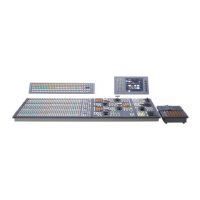
